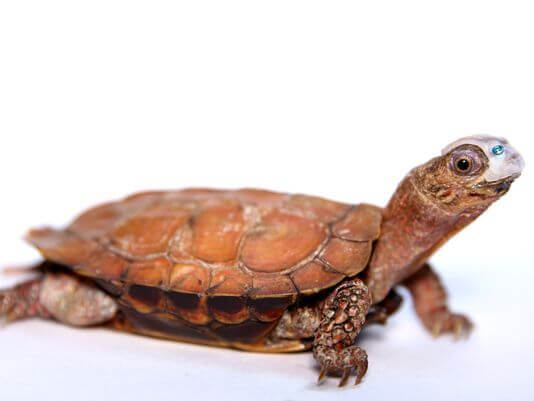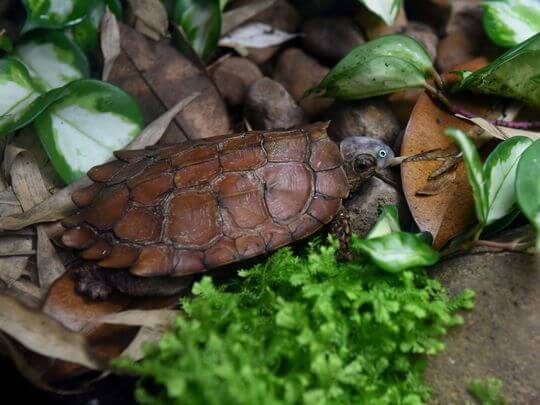The University of Tennessee College of Veterinary Medicine 3D prints a prosthetic resin mask for an injured turtle from the Zoo Knoxville.
Michaelangelo, Donatello, Raphael, Leonardo, and now Patches–all of these hard-shelled reptiles are on an exclusive list of turtles that have their very own mask. While the first four are best known for eating pizza and fighting crime, the latter is simply an endangered female black-breasted leaf turtle. However, Patches does have a unique story that makes her as extraordinary as any sewer dwelling superhero.
A resident of the Zoo Knoxville in Tennessee, zookeepers found Patches with a puncture hole in her right nostril last August. Shortly after, this wound became infected and spread across her face. To keep the endangered turtle alive and well, the University of Tennessee College of Veterinary Medicine used 3D printing to create a protective resin mask.
At about 30 years old and just 5.5-inches long, Patches has been living at the zoo for 10 years now. Her species is indigenous to northern Vietnam and southeastern China, and has been on the endangered animals list for awhile. Although there’s no direct proof of how she was injured, some zookeepers suspect that the park’s only male black-breasted leaf turtle could have inflicted the injury during a mating attempt. Luckily, the infection vanished and the would began to heal, but moss and dirt would continuously get stuck in the hole.

Patches the Turtle Receives 3D Printed Prosthetic Mask
After a year of treatment, zookeepers and veterinarians from the University of Tennessee collaborated to fix the turtle’s facial wound. Dr. Andrew Cushing and Dr. Kyle Snowdon suggested that they protect Patches face with a tiny 3-D-printed mask made of resin. This prosthetic allows the turtle to eat without risking further infection, or getting moss and dirt stuck in the hole.
“We had to look at different ways to get to it. It had to be the right size so the turtle could get its head in its shell. It could not cover the nostrils,” Dr. Snowdon said.
To create the mask, the team took a micro CT scan of Patches, and then used specialized computer software to create a 3D printable model of the turtle’s skull. After that, they printed 3D resin masks that could fasten directly onto her head. During the CT scan, the doctors also found the injury had destroyed Patches’ mouth’s hard palate. Therefore, a second mask was made and secured with the screw placed through the existing puncture hole, essentially creating a new roof in her mouth.
Although this was the first instance where UT vets used 3D printing to create prosthetics, the technology has become a popular method in healing wounded animals. From bird beaks to puppy wheelchairs, 3D printed prosthetics are giving injured animals a second chance at living a normal life. Now, equipped with a spooky little mask made of resin, Patches the turtle will join that list of lucky creatures.

Source: Knoxville News
License: The text of "Patches the Turtle Dons 3D Printed Prosthetic Mask After Facial Injury" by All3DP is licensed under a Creative Commons Attribution 4.0 International License.